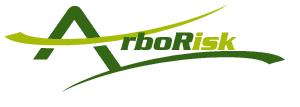From “Who” to “What” Improving Your Safety Culture
From “Who” to “What” Improving Your Safety Culture
Written by Eric Petersen, CIC
For most tree care owners, safety is always top of mind. Yet when something goes wrong, the first reaction is often to ask: “Who messed up?” While that question might give a quick answer, it doesn’t usually solve the real problem.
If your goal is to truly improve safety culture, the better question to ask is: “What failed?”
This simple shift, from focusing on the individual to focusing on the system can transform the way your team thinks about safety and risk.
The Problem with “Who Failed”
When the focus is on who, blame takes center stage. An employee gets singled out, morale drops, and everyone else learns one thing: keep your head down and don’t admit mistakes.
The result? Missed opportunities to learn and improve. Instead of uncovering the root causes of incidents, organizations patch over the problem and hope it doesn’t happen again.
Blame may feel like action, but it fixes nothing.
The Power of Asking “What Failed”
When you shift your thinking to ask what failed, you move the focus from punishment to problem-solving. You start asking questions like:
- Was the equipment adequate for the task?
- Did the team have the right training?
- Were the expectations clear?
- Were production pressures or time constraints influencing decisions?
This type of thinking opens the door to learning. It helps leaders see the bigger picture and identify systemic weaknesses that set people up for failure. When your team knows they won’t be blamed, they’re more likely to speak up about mistakes, near misses, or risky conditions. Shifting from blame to curiosity shows your crew you value solutions over punishment. Trust grows, and so does buy-in for safety.
So how can you start putting this into practice?
- After the next incident happens in your company, avoid the knee-jerk question of who did it. Instead, lead with: “What contributed to this happening?”
- Encourage open dialogue during tailgate safety meetings and debriefs. Make it clear the goal is learning, not blame.
- Involve your crew in identifying solutions. They know the work better than anyone and often have the best ideas for improvement.
- Celebrate when problems are solved at the system level, because every improvement makes your entire company safer.
At ArboRisk, we believe safety culture grows strongest when leaders stop blaming individuals and start improving systems. People will always make mistakes, that’s part of being human. The real question is whether your business is designed to learn from those mistakes or simply punish them.
Shifting from “Who failed?” to “What failed?” builds trust, strengthens your team, and creates a safer, more resilient company. If you are struggling improving your safety culture, reach out to an ArboRisk team member or get started with our Thrive Safety Package today!



Recent Comments